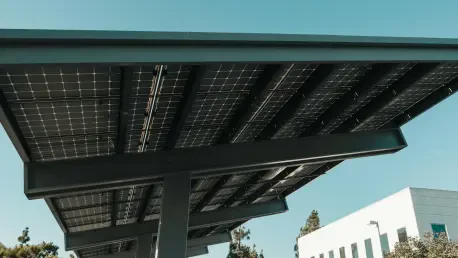In the face of global climate change challenges, regions worldwide are adopting innovative approaches to address environmental concerns. Queensland has positioned itself as a frontrunner with a host of pioneering efforts aimed at mitigating climate impacts and managing associated risks. Through comprehensive strategies, the region has not only demonstrated a commitment to resilience but also embraced sustainability as a core component in its environmental initiatives. The notable progress witnessed over recent years exemplifies Queensland’s dedication to building a sustainable future, emphasizing emission reductions, renewable energy transitions, and climate risk management.
Advancements in Solar Power and Renewable Energy
Solar Installations and Energy Audits
Queensland’s solar installations have experienced significant growth, showcasing a commitment that extends beyond mere policy enactment to tangible action. Since 2025, solar power installations have grown tenfold, becoming a crucial part of Queensland’s renewable energy strategy. Major developments have taken place at iconic sites such as Mon Repos Turtle Centre and the Queensland Herbarium at the Brisbane Botanic Gardens. Additionally, more than 600 kilowatts of solar panels have been strategically installed across various National Park Ranger Bases. Such initiatives reflect an overarching goal to harness solar energy’s potential, thereby diminishing dependency on nonrenewable energy sources.
Energy audits form another vital aspect of this endeavor, conducted regularly to assess and expand solar installations across the region. Energy conservation measures and the integration of advanced technologies further bolster Queensland’s renewable energy framework. By meticulously analyzing energy consumption patterns, the department can devise and implement solutions that enhance energy efficiency and sustainability. These audits play an instrumental role in systematically reducing carbon footprints, contributing significantly to the reduction in greenhouse gas emissions.
Achieving Zero Emissions Through Renewables and Electric Vehicles
Queensland’s commitment to utilizing renewable energy sources underscores a steadfast pursuit to lower operational emissions throughout the region. Presently, all electricity utilized by the department is sourced from renewable energy, dramatically reducing operational emissions. This significant transition showcases an unwavering dedication to clean energy—a move that has substantially impacted the overall carbon footprint.
Simultaneously, a marked shift toward zero-emission vehicles illustrates the broader commitment toward sustainable operations. The current vehicle fleet, with approximately 98% of leased vehicles being electric or hybrid, indicates substantial progress toward environmentally friendly transportation. The full transition to zero-emission vehicles for small and medium-sized options is expected by 2026, further reinforcing Queensland’s dedication to renewable energy and sustainable practices.
Carbon Sequestration and Climate Risk Management
The Role of National Parks as Carbon Sinks
Queensland’s natural landscapes, notably its national parks, serve as vital carbon sinks, absorbing substantial amounts of atmospheric carbon. These parks play a pivotal role in regional climate strategies by providing a natural mechanism for carbon sequestration. By absorbing emissions, these parks contribute to an ecological balance, effectively countering residual emissions and enhancing sustainability.
Efforts to secure and expand carbon sequestration opportunities highlight the proactive steps taken to capitalize on the wooded regions’ potential. By prioritizing the protection and expansion of these natural territories, the department seeks not only to preserve biodiversity but also to amplify the region’s carbon capture capacities. Such strategic initiatives underscore the importance of integrating natural resources in climate adaptation strategies, fortifying Queensland’s ecological resilience.
Addressing Climate Risks Through Strategic Frameworks
Climate risk management forms an integral part of Queensland’s broader environmental strategy, seamlessly incorporating climate change impacts into comprehensive risk processes. Guided by the Queensland Climate Adaptation Strategy, the region’s proactive approach identifies and addresses climate-related risks systematically. This foresight led to the development of the Climate Risk Management Strategic Framework, a blueprint that ensures the harmonization of risk management with adaptive climate strategies.
These efforts reflect Queensland’s forward-thinking stance, with a clear focus on creating robust mechanisms capable of addressing a spectrum of climate challenges. By incorporating adaptive frameworks and risk assessment practices, Queensland fortifies its environmental resilience, optimizing policy responses and mitigation strategies to safeguard its ecological and economic interests.
Paving the Path to Long-Term Environmental Resilience
Faced with the challenges of global climate changes, regions around the world are adopting innovative measures to tackle environmental issues. Queensland has emerged as a leader through groundbreaking initiatives aimed at alleviating the impacts of climate change and effectively managing related risks. The region’s comprehensive strategies showcase a steadfast commitment to resilience and have embraced sustainability as a fundamental element of its environmental efforts. In recent years, Queensland has made notable strides in building a future that prioritizes sustainability. The region emphasizes the importance of reducing greenhouse gas emissions and transitioning towards renewable energy sources. This commitment is evident in its climate risk management initiatives, which are designed to address and adapt to the changing climate. By integrating these approaches, Queensland demonstrates its dedication to creating an environmentally responsible and sustainable future, setting a benchmark for other regions to follow in the global fight against climate change.









